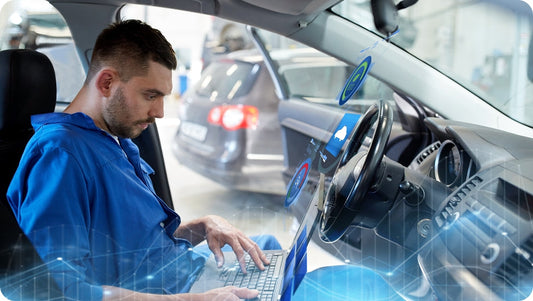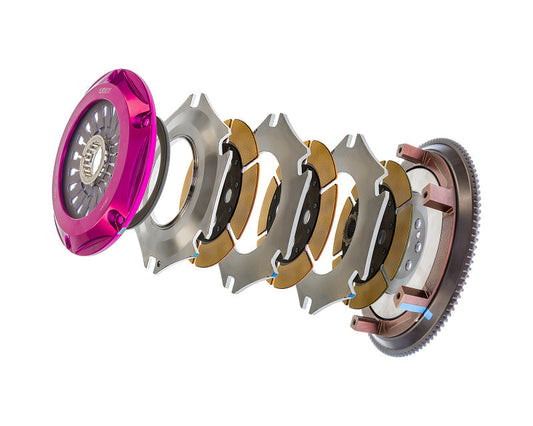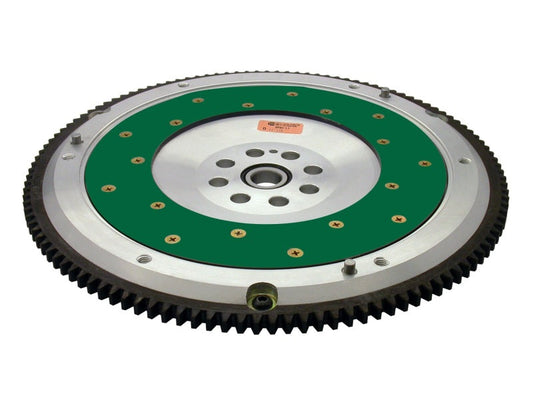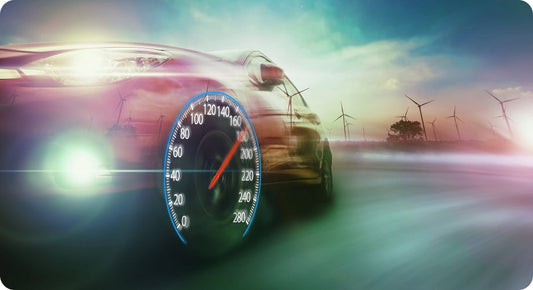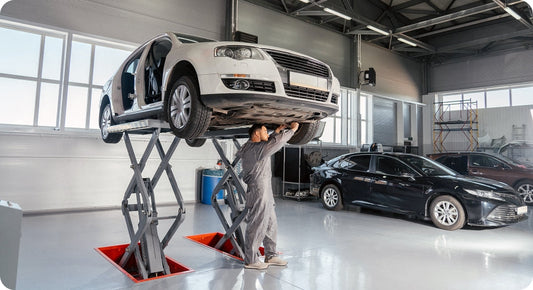Few things are more nerve-wracking than pressing your brake pedal and feeling little to no response. That loss of stopping power? It's called brake fade—and it’s something every performance driver should understand and know how to prevent.
At WOT Performance Parts, we help you avoid brake fade by offering the highest-quality performance pads, rotors, fluids, and complete brake kits built to handle heat, pressure, and aggressive driving. Check our collections on our website.
What Is Brake Fade?
Brake fade is a temporary reduction in braking power caused by excessive heat buildup. When your braking system gets too hot, it can’t create enough friction to slow down your car effectively. This leads to longer stopping distances, a soft or spongy pedal, and an unsettling loss of control.
While brake fade typically resolves once the brakes cool down, repeated exposure can lead to long-term wear—or worse, total brake failure.
What Causes Brake Fade?
There are several common culprits behind brake fade, and they all come back to heat.
1. Overheating Brake Pads
 When pads get too hot, the friction material begins to break down or glaze. This reduces their ability to grip the rotors, making them less effective.
When pads get too hot, the friction material begins to break down or glaze. This reduces their ability to grip the rotors, making them less effective.
Signs:
· Squealing or smoking brakes
· Burnt smell
· Glossy or hardened pad surface
2. Boiling Brake Fluid
Brake systems use hydraulic fluid to transfer force. Under extreme heat, this fluid can boil—especially if it’s old or low-quality. When it boils, air bubbles form in the lines, reducing pressure and causing a soft or unresponsive pedal.
Signs:
· Pedal goes to the floor
· Brakes feel inconsistent
· Loss of stopping power at high temps
3. Rotor Glazing Or Warping
Excessive heat can also cause your brake rotors to warp or glaze. This leads to vibration, uneven braking, and reduced friction.
Signs:
· Pulsating pedal during braking
· Squealing or scraping noise
· Visible grooves or hotspots on the rotor surface
4. Undersized Or Inadequate Brakes
Stock brake systems are designed for normal driving—not high speeds, towing, or track use. If you're pushing more power or driving aggressively, stock brakes will overheat and fade faster.
Signs:
· Fade happens after repeated hard stops
· Brakes feel fine when cool, but lose power when hot
· Your setup feels underpowered for the build
How To Prevent Brake Fade
Now that you know what causes brake fade, here’s how to keep your braking system cool, consistent, and fade-free.
1. Upgrade Your Brake Pads
Performance pads are made from high-temperature friction materials that resist heat and maintain bite.
Choose based on driving style:
· Street Performance Pads: Better than stock for spirited driving.
· Track/Racing Pads: Withstand extreme heat, ideal for autocross or track days.
2. Install High-Performance Brake Rotors
Rotors help dissipate heat, and slotted or drilled rotors increase cooling and reduce fade.
Options include:
· Slotted Rotors: Clean the pad surface and resist glazing.
· Drilled Rotors: Improve cooling, but may crack under heavy track use.
· Two-Piece or Vented Rotors: Offer premium heat management and weight reduction.
3. Flush And Replace Brake Fluid
Old brake fluid absorbs moisture, lowering its boiling point. Switching to a high-temperature DOT 4 or DOT 5.1 fluid keeps your system stable under pressure.
How often?
· Every 12–24 months for regular drivers
· After every track day or heavy performance use
4. Install Stainless Steel Brake Lines
Rubber lines expand under heat, leading to a mushy pedal feel. Stainless steel braided lines resist expansion and provide a firmer, more consistent pedal.
5. Upgrade To A Big Brake Kit
For high-horsepower or track builds, a big brake kit is a game-changer. These kits include larger rotors and multi-piston calipers for better heat dispersion and more stopping power.
 Benefits include:
Benefits include:
· Better heat management
· Greater pad surface area
· Shorter stopping distances
6. Use Proper Driving Technique
How you drive also impacts brake fade. Avoid riding the brakes or constant braking on long descents. Instead, use engine braking and brake firmly, then release. This technique gives your brakes a chance to cool.
Brake Fade Doesn’t Just Affect Racers
Even daily drivers can experience brake fade—especially in mountainous areas, while towing, or during emergency braking situations. If your pedal feel is inconsistent or your braking power fades after repeated stops, it’s time to take a closer look.
Stay Safe With High-Performance Brake Parts From WOT
At WOT Performance Parts, we offer everything you need to upgrade your braking system and prevent fade—from track-ready pads and vented rotors to braided lines, fluid, and full big brake kits.
Don’t let brake fade compromise your safety or performance. Browse our selection today and stop with confidence—every time. Contact WOT Performance Parts today for more information.


